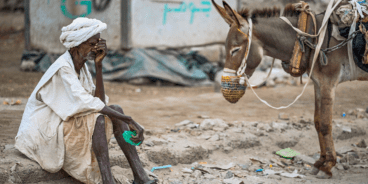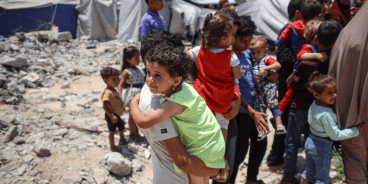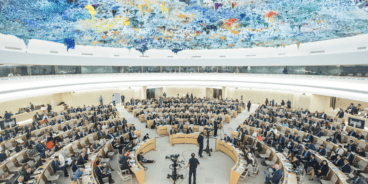
The Responsibility to Protect Comes of Age
The following article written by Prof. the Hon. Gareth Evans was originally published in the Wisconsin State Journal.
Good news not only sells less well than bad news, but also often seems harder to believe. Reaction to Harvard psychologist Stephen Pinker’s majestic new book, “The Better Angels of Our Nature,” is a case in point.
Pinker shows that, over the course of history, there has been a dramatic decline in violence, both domestically and internationally — and that this downward trend is continuing. But the response of many reviewers to Pinker’s work has been incomprehension, denial, or a tenacious focus on individual horror stories.
Many will be similarly slow to accept that when it comes to the most conscience-shocking classes of violence — genocide and other mass atrocities — dramatic progress has been made recently. Those gains culminated in the interventions, unthinkable a decade ago, that the United Nations Security Council authorized this year to stop unfolding human rights catastrophes in Ivory Coast and Libya. With progress like this, it is no longer fanciful to hope that never again will there be another Holocaust, Cambodia, Rwanda or Srebrenica.
It is 10 years since an international commission that I co-chaired gave birth to the concept of the Responsibility to Protect (R2P), and six years since more than 150 heads of state and government endorsed it unanimously at the U.N.’s World Summit in 2005. The core idea was simple: Stop arguing for a “right to intervene,” which inevitably generates a backlash, and talk instead about “responsibility” — that of every state to protect its own citizens from atrocities, but also that of the international community to act if a state is unable or unwilling to do so.
The new concept also made clear that international protective action meant military coercion only in unavoidable cases. The normal sequence would be assistance, persuasion and nonmilitary pressure like sanctions and criminal prosecution.
For some time after 2005, it was possible to argue that all of this was hot air, and that fast, decisive action to respond to genocidal atrocities would remain as unlikely as ever. The jury remained out even after Kenya in early 2008, when horrific post-election violence was widely considered an R2P case, and former U.N. Secretary-General Kofi Annan led a successful diplomatic mission to persuade ethnic-group leaders to quell the storm.
But it was in Ivory Coast, and especially in Libya early this year, that R2P really came of age. The two Security Council resolutions on Libya in February and March were textbook examples of a phased response to an increasingly desperate situation. Invoking R2P, that response began with a warning and the threat of sanctions and prosecution at the International Criminal Court, and only subsequently allowed military force to protect civilians. The threat was real, and the response — in terms of many thousands of lives saved — was unquestionably effective.
Other developments, both before and since, have embedded the R2P norm. The arguments now are not about the principle, but about how to apply it.
In particular, unlike previous situations — ranging from the Burmese response to Cyclone Nargis to the Sri Lankan military’s civilian massacres masquerading as a legitimate response to terrorist insurgency — there is little conceptual disagreement now about what are, and are not, R2P cases. For all of the lamentable inadequacy of the Security Council’s response to the situation in Syria, no one has seriously argued that it is not an R2P case.
Nobody denies that challenges remain in ensuring that R2P is applied effectively and consistently. An immediate need is to counter the perception that any condemnatory response to an unfolding R2P situation means stepping onto a slippery slope to military confrontation — a perception that Russia and China heavily milked in seeking to justify their vote against an early stage Security Council resolution on Syria.
It is crucial in this context that R2P advocates continue to emphasize that coercive military force can be contemplated only in the most extreme circumstances. The best way to make that point would be to revive the dormant debate about adopting narrow guidelines for military intervention, as recommended by my commission and Annan prior to the U.N. vote in 2005. Clear criteria like “last resort,” “proportionality,” and “balance of consequences” would make it harder to use cynical diversionary tactics in the Security Council and elsewhere.
I have learned from long experience that to be optimistic about almost anything in international affairs is to run the risk of being thought ignorant or naive, if not demented. But, on the issue of mass-atrocity crimes — where the international community has long had good reason for shame — real optimism is now justified. That is very good news indeed.
Related Content


